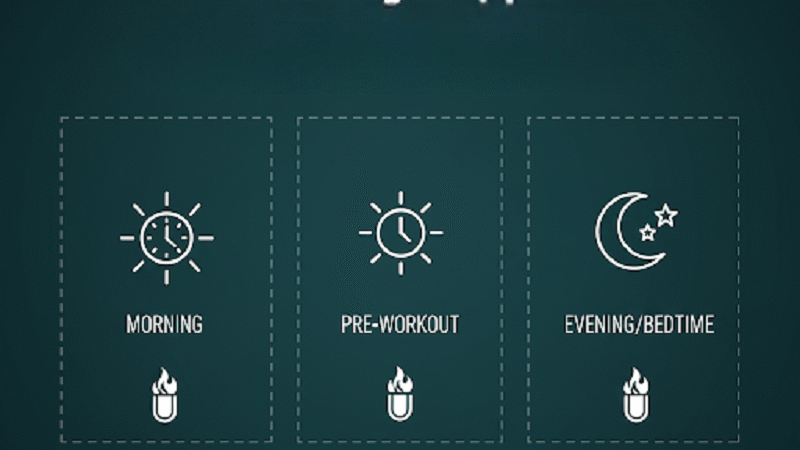Fibromyalgia Cryotherapy | Benefits, Risks, and Real Results

Fibromyalgia cryotherapy is a chronic condition marked by widespread musculoskeletal pain, fatigue, sleep disturbances, and often mood or cognitive issues. Many people with fibromyalgia seek treatments beyond medications, including complementary and alternative therapies. Cryotherapy—a treatment involving exposure to extremely cold temperatures—has been explored as one such option. But how effective is it? What are the risks? And what does the real research say?
What Is Cryotherapy?
Cryotherapy refers to the use of cold to treat a variety of ailments. There are different kinds:
- Local cryotherapy: applying cold packs, ice, or cold-compresses to a specific area.
- Whole-body cryotherapy (WBC) or whole-body cryostimulation: exposing the entire body to very cold air in a cryo-chamber or cryosauna cabin, usually for a short period (1–5 minutes).
In WBC, temperatures may dip very low (−100 °C to −140 °C or more) for short durations. The goal is to trigger physiological responses—such as reduced inflammation, altered pain signaling, or modulation of immune response—that might be helpful for conditions like fibromyalgia.
Fibromyalgia: Key Challenges & Why Cryotherapy Is Considered
To understand why cryotherapy might help, it’s useful to recap what makes fibromyalgia so hard to treat:
- Widespread pain with no obvious injury or inflammation in many cases.
- Fatigue, sleep problems, cognitive fog (“fibro-fog”).
- Possible involvement of the nervous system (central sensitization), altered pain signaling.
- Sometimes mild abnormalities in immune markers (cytokines), oxidative stress.
Because conventional treatments (medications, physical therapy, lifestyle changes) often provide incomplete relief and sometimes unwanted side effects, people and clinicians explore adjunctive approaches. Cryotherapy is attractive because it is non-pharmacologic, can be relatively low risk (if done properly), and promises multi-targeted benefits: pain reduction, mood improvement, better sleep, perhaps even immune/oxidative stress modulation.
What the Research Shows: Real Results
There have been a number of studies in recent years investigating cryotherapy (especially WBC) in fibromyalgia. Below are the most relevant findings.
Pain Reduction & Disease Activity
- In a study “Serial whole-body cryotherapy in fibromyalgia is effective and alters cytokine profiles,” subjects who underwent 6 sessions of WBC over six weeks (at about −130 °C) showed significant reductions in pain (measured by visual analogue scale) after 3 and 6 sessions. They also had improved disease activity (Fibromyalgia Impact Questionnaire). BioMed Central
- Another randomized clinical trial using cryosauna cabins found that WBC could reduce pain and overall severity of disease as measured by standard tools (e.g. FIQ, ICAF) after 2–4 weeks compared to resting controls. SpringerLink+1
Quality of Life, Sleep, Fatigue
- A randomized controlled trial (10 sessions over 8 days) of WBC in fibromyalgia patients showed improved health-related quality of life, lasting at least one month after treatment. PubMed
- A follow-up study evaluated patients over longer term (12 months) comparing a rehab program + WBC vs rehab alone. It found that WBC produced additional benefits in pain relief, sleep quality, and well-being. These effects lasted about 3–4 months in many participants. PubMed
Immune / Molecular / Biomarker Effects
- The same serial WBC trial (6 sessions) mentioned above also measured cytokines (IL-1, IL-6, TNF-α, IL-10). It found that these pro-/anti-inflammatory markers were significantly altered over time in fibromyalgia patients, suggesting that WBC might work by modulating immune system or inflammatory balance. BioMed Central
Local Cryotherapy
- Even local cold application (ice packs / cold compress) to muscles has shown some benefit. For example, applying cold to the trapezius muscle in fibromyalgia patients produced significant pain reduction at 10 minutes, 1.5 h, and even 24 h after treatment compared to baseline. PubMed
Duration of Effects / Real-World Practicalities
- The relief from whole-body cryotherapy tends to persist for some weeks to a few months. For example, in the rehab + WBC study, improvements in sleep, mood, well-being lasted about 3-4 months. PubMed
- However, some studies found that once WBC is discontinued, improvements may wane. E.g., in the serial WBC + cytokine study, the benefits (pain, disease activity) were not significant anymore 3 months after the treatment stopped. BioMed Central
- Also, many studies use WBC in conjunction with other therapies (rehabilitation, exercise, physical therapy). It’s not always clear how much benefit is from WBC alone vs combined interventions.
Mechanisms: How Might Cryotherapy Help Fibromyalgia?
Though the exact mechanisms are not fully understood, several plausible pathways have been studied:
- Modulation of inflammatory / immune markers
WBC impacts levels of cytokines (e.g. IL-1, IL-6, TNF-α, IL-10) which may help restore some balance between pro- and anti-inflammatory signals. BioMed Central - Reduction of oxidative stress
Cold exposure stimulates antioxidant responses, decreasing oxidative stress, which is thought to contribute to fibromyalgia pathophysiology. SpringerLink+1 - Nervous system / pain modulation
Cold can slow nerve conduction velocity, affect thermoreceptors, reduce sensitivity. Might reduce central sensitization or alter pain perception. BioMed Central+1 - Psychological / mood improvements
Lower pain, better sleep, improved well-being feed into better mood and less stress, which in turn can further reduce perception of pain. Plus cold exposure might stimulate release of endorphins, or triggers hormonal responses (e.g. cortisol, catecholamines) that are part of stress adaptation. SpringerLink+1
Benefits: What Cryotherapy Offers
From the studies and reports, the benefits of cryotherapy for fibromyalgia include:
| Benefit | Evidence / Strength |
|---|---|
| Reduction of pain intensity | Moderate; several RCTs and controlled trials show measurable pain decrease. BioMed Central+2SpringerLink+2 |
| Improved disease activity / fibromyalgia severity scores | Yes; tools like FIQ, ICAF show improvement post-WBC. SpringerLink+2BioMed Central+2 |
| Better sleep quality / reduced fatigue | Some evidence; rehab + WBC yields better sleep, improved well-being. PubMed |
| Enhanced quality of life / psychological well-being | RCTs show improved quality of life, mood. PubMed+1 |
| Short-term relief from localized pain with cold applications | Yes; local cold on trapezius gave relief lasting hours to a day. PubMed |
Risks and Downsides
While cryotherapy has promising benefits, it is not without risks. Some are mild, others more serious. Also there are limitations in the evidence that are important to understand.
Adverse Effects Reported
From the research:
- Mild symptoms such as headache, dizziness, malaise, joint or muscle pain, nervousness. SpringerLink+2SpringerLink+2
- Cold-induced discomforts: tremors, muscle stiffness, sleep difficulty, altered bowel sounds and bloating in some patients. SpringerLink
- Palpitations, feeling of heartbeat, some cardiovascular responses in certain individuals. SpringerLink
- One study reported discontinuation due to muscle stiffness and tremor. SpringerLink
Limitations and Risks by Type
- Temperature & Duration Sensitivity: If temperatures are too low or exposure for too long, there is risk of frostbite, skin damage.
- Existing Medical Conditions: Those with cardiovascular problems, hypertension, Raynaud’s disease, cold allergies, or any condition that makes cold exposure risky should be cautious.
- Cost and Access: Cryotherapy chambers or cryosaunas aren’t universally available, can be expensive, sometimes not covered by insurance.
- Short-lived Effects / Need for Maintenance: Some benefits wear off after treatment stops, meaning one may need repeated sessions. This can be time-consuming and costly.
- Lack of Long-Term Evidence: Though there are follow-ups, many studies are small, short duration, and often combine with other therapies. So, the long-term efficacy and safety are less well established.
Contraindications and Warnings
- Avoid if you have unstable cardiovascular disease, uncontrolled high blood pressure.
- Avoid if you have cryoglobulinemia, Raynaud’s, peripheral vascular disease.
- Be careful if you have cold intolerance, or skin conditions that worsen with cold.
- Pregnant women should check with their doctor.
- It’s important that sessions are supervised by trained professionals in settings with proper safety measures.
Weighing Benefits vs Risks: Is It Worth It?
For many patients with fibromyalgia, the balance seems favorable provided:
- Cryotherapy is used as an adjunct, not as a sole treatment. It works best when combined with physical therapy, exercise, sleep hygiene, psychological support, etc.
- Sessions are done safely, in reputable facilities, with proper protocols (temperature, duration, pre-screening).
- Realistic expectations are set: relief may occur, but it may not eliminate fibromyalgia entirely, nor be permanent without follow-ups or maintenance.
Practical Tips for Trying Cryotherapy
If you or someone you know with fibromyalgia is considering cryotherapy, here are some practical guidelines:
- Consult your healthcare provider first, especially if you have any heart, lung, vascular, or skin conditions.
- Start gradually. Begin with fewer sessions or milder cold exposure, see how your body reacts.
- Stay warm before and after treatment. Proper clothing, warming up, avoiding sudden transitions that could stress your body.
- Pair with other treatments. Use cryotherapy along with exercise (within tolerance), physical therapy, stress/mood management, diet / sleep optimization.
- Track outcomes. Keep a log of pain levels, sleep quality, fatigue, mood before, during, and after sessions to see what’s helping.
- Monitor for side effects. If you feel unusually numbness, skin changes, cardiovascular symptoms (e.g. palpitations), stop and seek medical advice.
What Is Still Uncertain / What Future Research Needs
Even though the results are promising, there are gaps and uncertainties:
- Standardization: There’s no consistent standard for how many sessions, how cold, how long, frequency, etc. Different studies use widely varying protocols. BioMed Central+1
- Long-term safety and efficacy: More large-scale, long-term randomized controlled trials are needed to establish how long benefits persist and whether repeated treatment leads to cumulative effects or risks.
- Comparisons to other cold therapies: For example, how does WBC compare to ice baths, localized cold application, contrast therapy? Which is more cost-effective and tolerable?
- Mechanistic clarity: Though the immune/cytokine findings are interesting, more work is required to firmly understand how cryotherapy interacts with central sensitization, neurotransmitters, oxidative stress, etc.
- Population diversity: Many studies have small sample sizes, often limited to certain demographics. We need research in more diverse populations.
Summary: What “Real Results” You Might Expect
Based on current evidence, here are plausible expectations for someone with fibromyalgia who tries cryotherapy under good conditions:
- Within a few sessions: some measurable reduction in pain severity, possibly improved mood and sleep.
- Over 1–2 weeks with repeated sessions: better overall quality of life, less fatigue, possibly needing fewer pain meds.
- Over a few months: benefits may persist but may taper off unless maintenance is done.
- However: Not everyone responds; degree of relief varies. If severe symptoms, comorbidities exist, or if treatment is inconsistent, results may be modest.
Conclusion
Cryotherapy—especially whole-body cryotherapy—offers a promising complementary therapy for fibromyalgia cryotherapy. The evidence to date suggests that it can:
- reduce pain and disease activity,
- improve sleep, fatigue, mood,
- enhance quality of life,
- and even show measurable changes in immune and inflammatory markers.
But it is not a magic cure. The effects are often partial, may require multiple or ongoing sessions, and carry risks if not applied carefully and under proper supervision.
If you have fibromyalgia and are considering cryotherapy, the take-home is: weigh the benefits vs risks, consult your doctor, start slow, and use it as part of a holistic treatment plan. With that approach, many people may find meaningful relief.






